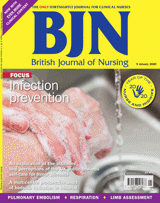References
A vision for nursing in Pakistan: is the change we need possible?
Abstract
Since its inception, the nursing profession has not been given proper recognition, especially in the developing world. Although nursing has the largest healthcare workforce, its contributions to healthcare systems are not properly acknowledged. There is need to develop a vision for the nursing profession, which must reflect the practice's professional qualification. Every profession in the world is entitled to a degree of autonomy that reflects the level of education and training required to enter that profession. Similarly, nursing should also be allowed to use the full scope of its educational credentials so that it can fully benefit society.
Nurses make up the largest part of Pakistan's healthcare workforce. However, nurses in Pakistan are often undervalued and their contribution to the healthcare system at all levels is underestimated (Chauhan, 2014). If we look at the various roles of nurses around the world, we come to realise that they can run clinics, they can practise as specialists in their subspecialty (such as family medicine, cardiology and maternal and child health) and they have the potential to do much more (O'Rourke, 2013). Unfortunately, in Pakistan's healthcare system, the horizon for nurses has been narrowed and their roles are limited to just administering medications, providing basic hygiene care and obeying doctors' orders.
Register now to continue reading
Thank you for visiting British Journal of Nursing and reading some of our peer-reviewed resources for nurses. To read more, please register today. You’ll enjoy the following great benefits:
What's included
-
Limited access to clinical or professional articles
-
Unlimited access to the latest news, blogs and video content

